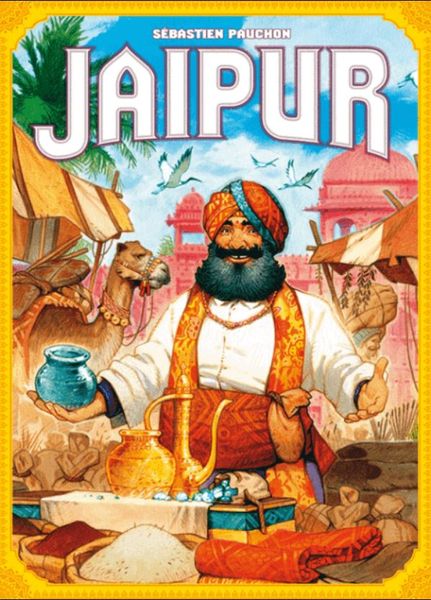Jaipur (2009) Board Game
Jaipur is a popular two-player card game designed by Sébastien Pauchon and published by GameWorks SàRL in in 2009. The game is set in the vibrant marketplaces of Jaipur, India, where players take on the roles of traders competing to become the Maharaja’s personal trader.
Game Components of Jaipur
How To Setup Jaipur
To set up Jaipur, lay out the tableau and remove any camels from the players’ hands, adding them to their herd on the table. Each player starts with a hand of five cards. The market is set up with face-up cards, and the token piles are placed within reach of both players.
Gameplay Mechanics and Game Objective
– Take several goods (e.g., 2 gems and 1 gold).
– Take 1 single good (e.g., 1 spice or 1 leather).
– Take all of the camels.
– Sell cards to the market to exchange them for tokens.
– Sell sets of goods to earn bonus tokens with random values.
– A round ends when 3 of the 6 piles have no more tokens or when a player cannot draw a pile from the supply deck.
– The player with the most camels receives the camel token.
– The player with the highest total score receives a Seal of Excellence.
– Collect two Seals of Excellence to win the game.
Player Experience
Jaipur offers a fast-paced and engaging experience, typically lasting between 15-30 minutes. Players must balance the need to collect valuable goods with the strategic timing of selling them to maximize points. The game requires a mix of tactics, risk management, and luck, making it appealing to both casual and experienced gamers. The beautiful, vibrant artwork and high-quality components add to the overall enjoyment.
Pros
Cons
Personal Thoughts on Jaipur
Jaipur is an excellent choice for couples or anyone looking for a compelling two-player game. It combines the simplicity of a quick card game with the depth of strategic decision-making, making it a modern classic. While it may lack the complexity some hardcore gamers crave, it is perfect for those who enjoy a balance of strategy and luck. For families, it’s a great introduction to card games, and its short playtime makes it an ideal addition to any game collection. However, its solvability after extensive play might reduce its replay value for very experienced players.
We are supported by our audience. When you purchase through links on our site, we may earn an affiliate commission, at no extra cost for you. Learn more.

